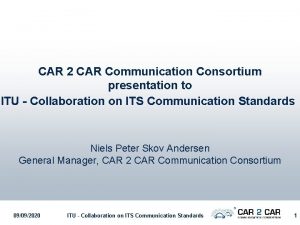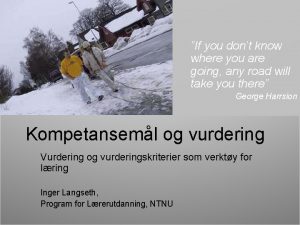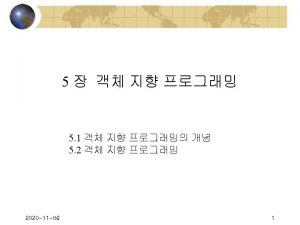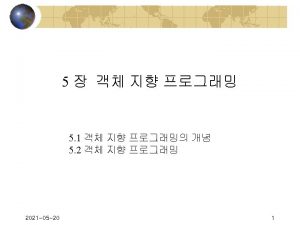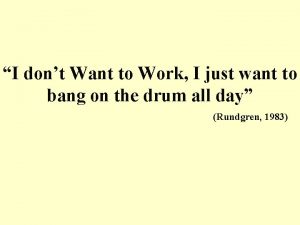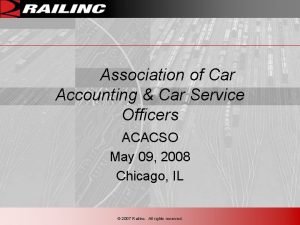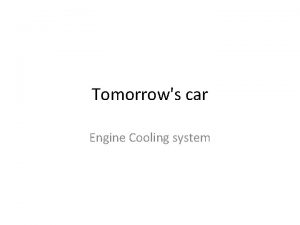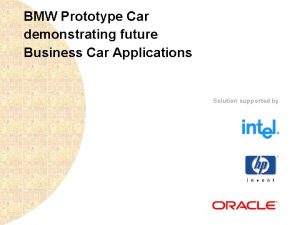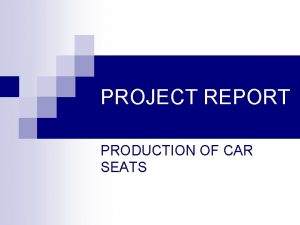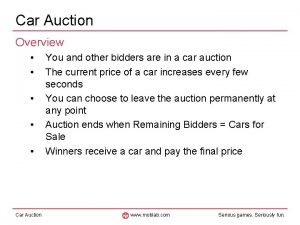I Dont Want a Car I want a




















- Slides: 20

I Don’t Want a Car, I want a Trip The Gig Economy is Coming, and it Will Impact You Ron Sasine Hudson Windsor, LLC - Retail Packaging Strategy & Execution ron@Hudson. Windsor. com

The Big Message, and Four Things to Think About Disaggregation of Assets is a Growing Trend q Vertical Integration of Production peaked in the 1980’s, but by the early 1990’s was being widely reevaluated q Over the past 20 years, Managers Have Increasingly Focused on Core Production Capabilities q Efficient Purchasing Practices, Collaborative Supplier Relationships and Capital Availability all promote disaggregation q The Gig economy requires changes in Management Thinking, Regulatory Frameworks and Payment Expectations Source: Mc. Kinsey and Co.

The Uber Lesson …yesterday’s way of doing things seemed to work pretty well if you owned the assets …but today’s market devalues asset ownership in favor of service providers

South American Toothpaste …or what I learned about asset ownership from my favorite competitor In the 1990’s, large consumer products companies began to divest ancillary, non-core assets Suppliers—specifically packaging suppliers—stepped in and invested in additional production facilities and service offerings How do you beat a competitor who plays all the right cards? Customer needed flexibility, low capital expense, and cost improvement Set up an in-plant finishing line to fold/glue cartons, operated by contract labor Flat-shipped cartons required lower inventory, less shipping space, and faster changeovers between sizes and items Filling-line flexibility beat quality printing in customer’s decision tree

Uber’s Lessons For Packagers …the changes they’ve created in one market will eventually impact ours A temporary asset, where and when I want it, is better than a fixed asset What we think we know about industry structure can be changed almost immediately with a good app and a loose network of suppliers Flexibility of assets requires flexible employment contracts Purchasers have to adjust their procurement processes, and once they see the benefit, they will Cheap capital allows many more suppliers to bring their own equipment to the market q Regulatory frameworks aren’t equipped for the coming trend

Temporary Assets …can accomplish most of today’s packaging needs …and can be upgraded seamlessly when needed Manufacturing sites are evolving from top-down, hierarchical facilities owned and run by single companies to networks of collaborating suppliers performing sequential tasks Automotive plants – JIT transformed into Modular Consortia Cosmetics fillers – Blended under Brand Owner direction, filled by Contract Packager Food packagers – Centralized production of bulk items, distributed fill An Uber model in this business would have third-party packagers flexing their capacity to reflect changes in volume, format, and product to match the Brand Owners’ needs Fruit packing equipment accompanies the changing harvest

Apps and Networks …provide a boost in transaction efficiency …streamline information sharing and increase total supply Manufacturers operating in the emerging environment will search out filling lines and packagers who can deliver best-in-class cost Transparency and open costing will become standard, as Brand Owners have a wide variety of choices Temporary relationships will grow, and the costs of entry/exit of supplier relationships will lessen An Uber model in this business would include more modularity for Brand Owners as they drive for common packaging footprints and formats Packagers would need to be nimble and flexible, adjusting their capabilities and assets to evolving Brand Owner needs

Who’s the Boss? …factories in the future could feel less like assembly lines and more like construction sites …so managers will need to know how their people contribute to the whole, and lead Packagers are likely to see moves toward flexible employment contracts, with pressure from manufacturers and brand owners to take on increasing staffing responsibilities Cell phone assembly lines integrated with Provider-specific packaging lines Speed, quality and accuracy of packaging lines will be the sole responsibility of Packagers, so arrangements will need to be made to cover risk and liability Sam’s Club preferred packaging provider agreement covers loss of product, in-Club performance, and safety

Partners, Really? …packaging Procurement will need to become less adversarial …and transparent data sharing will drive inefficient providers out The intense flexibility of the Gig Economy is driven by the immediacy of the data (location, price, performance expectations) and the collaboration implicit in the “sharing” of the ride, asset, or experience It’s not about what you did for me last year or last quarter, but what can you do for me in the immediate short-term An Uber model in this business would require Procurement teams to work with a larger number of Packagers than at present and treat them all equally and uniformly Packagers would need access to transparent demand data and immediate decision making on the part of Brand Owners

BYO Car/Machine/Filler …with the cost of capital at historic lows, we’ve all got a line of credit …but does that mean you’ve got the right asset? The Gig Economy means that anyone with capital can provide anything they’re willing to invest in But the Gig consumer knows that the relationship is short-term and that no matter how nice the car is, it’s going home with someone else An Uber model in the Packaging business would foresee a number of packaging providers able to deploy machinery rapidly, smoothly and on a temporary basis Mobility, flexibility and speed will be critical success factors for packaging Providers who adopt this model

How Can Brand Owners Execute? New Product Opportunities at Retail will be Driven by Three Key Factors Convenience – Ease of Acquisition, Ease of Use, Social Endorsement Expansion – Flavor, Variant, Format, Channel Velocity – Speed to deploy, match, scale Retailers need cost savings Walmart is spending an additional $2. 7 billion on in-store labor Online retailers need operational savings Brand Owners need to Strengthen Innovation Pipelines with New Packaging Usage occasions, Formulations, Price points, Merchandising options Source: Walmart, UC Berkeley

Innovation and Product Pricing …it’s not about charging more because you have a better package …BUT, does your new format help retailers establish a new price point for innovation? Orlando Kansas City

Consumer Preferences …packaging will drive preference when it fulfills an untapped need or drives new usage Chicago

New Formats …can help consumers make informed choices among product options …and can help traditional brands reinvent themselves Orlando Kansas City

Reality of Retail Operations …what is needed to execute product sales in your new packaging format? …how complicated is it to stock, shop and face? Jane, MO

Replenishment Efficiency …how many actions are required to stock your product? …does your product need help to stand up and get noticed? Chicago, IL Jane, MO

How do winning products displace the competition? Innovative packaging with measurable consumer benefit Ease of use, dosing, performance, preparation help Improvement in product, enabled by packaging innovation Ships efficiently through multi-channel commerce Packaging supports individuality, single-use, and customization Key millennial purchase drivers Simplicity over net price; net price over unit cost On-shelf efficiency in presentation, operations, and sku count Streamlined store operations with packaging improvement Era of fierce competition for slots and facings

Retail-Ready Packaging is coming, driven by three factors Consumers need to instantly locate and identify products during evershorter shopping trips Mobile is easy, instant and helpful On-line products are always where you expect them to be—often in an automatic, pre-set list of repeat buys Retailers need labor savings Walmart is spending an additional $2. 7 billion on in-store labor $15 minimum wage would result in an additional $4. 95 billion/year Stores need to refocus their associates toward customer service and away from low value-added activities Source: Walmart, UC Berkeley

Recap: The Big Message, and Four Things to Think About Disaggregation of Assets is a Growing Trend q Vertical Integration of Production peaked in the 1980’s, but by the early 1990’s was being widely reevaluated q Over the past 20 years, Managers Have Increasingly Focused on Core Production Capabilities q Efficient Purchasing Practices, Collaborative Supplier Relationships and Capital Availability all promote disaggregation q The Gig economy requires changes in Management Thinking, Regulatory Frameworks and Payment Expectations Source: Mc. Kinsey and Co.

Questions? Ron Sasine ron@hudsonwindsor. com www. hudsonwindsor. com 479/657 -0177 © 2016 Hudson Windsor, LLC
 Dont laugh at me dont call me names
Dont laugh at me dont call me names Dont ask dont tell political cartoon
Dont ask dont tell political cartoon Qq moves
Qq moves I just wanna be a sheep
I just wanna be a sheep A 1000 kg car and a 2000 kg car is hoisted the same height
A 1000 kg car and a 2000 kg car is hoisted the same height Car 2 car consortium
Car 2 car consortium Dont forget to join
Dont forget to join Don't touch lesion
Don't touch lesion Pablo neruda i don't love you
Pablo neruda i don't love you Dont ask what
Dont ask what Sylvie auger éif uqtr
Sylvie auger éif uqtr Please dont eat my cookies
Please dont eat my cookies Dont call my bluff
Dont call my bluff Words for dont care
Words for dont care Dont worry be happy notes
Dont worry be happy notes Dont tense
Dont tense Grammar chomp chomp
Grammar chomp chomp I dont know about tomorrow
I dont know about tomorrow If you dont know where to go
If you dont know where to go Dont qui que
Dont qui que May ı take your ruler cevabı
May ı take your ruler cevabı





